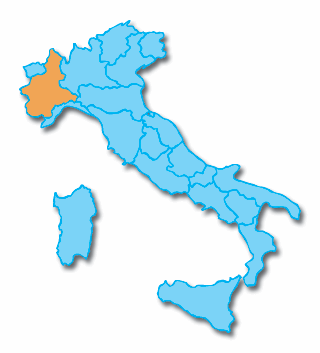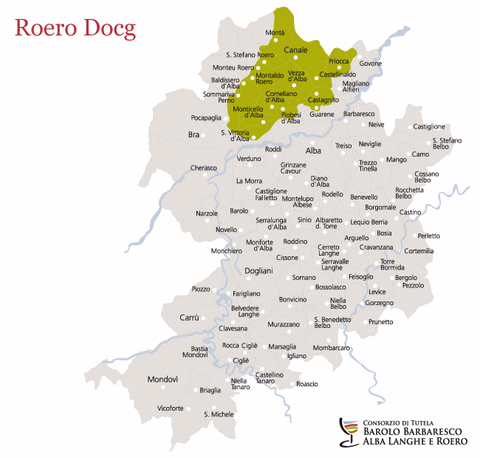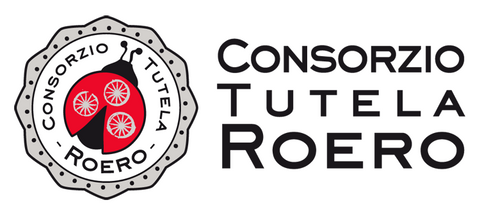ROERO DOCG - ROERO ARNEIS DOCG
Production area and denomination
Roero is the name of an area located in Piedmont (northwest of Italy), bordering the famous Langhe area, where Barolo and Barbaresco are produced.
There are 23 villages in Roero, the largest is Canale. The official winegrowing area runs along the river Tanaro between the areas of Bra and Govone, where the soil is mainly sandy.
Together with Langhe, In 2014, Roero was named a Unesco World Heritage site.
.

Piedmont region
.

Roero Area
.

Roero Consortium logo
The wine producers of Roero were joined in the Roero Producers’ Consortium (Consorzio Tutela Roero on the 4th of March 2014, Today there are more than 300 consortium members made up of producers and growers, and more than 1,000 hectares, with a total of about 6 million bottles produced, of which more than 60% are exported.
Arneis (WHITE) and nebbiolo (RED) are the two base grapes of the Docg: native grapes, typical of this territory, cultivated for centuries and interpreted with great care by the Roero producers.
ROERO DOCG (red):
Min 95% Nebbiolo, aged min 20 months, with 6 months in barrel, min 12.5% alcohol
ROERO RISERVA DOCG (red):
100% Nebbiolo, aged min 32 months with 6 months in barrel, min 12.5% alcohol
ROERO ARNEIS DOCG (white):
Min 95% Arneis, min 11% alcohol
ROERO ARNEIS SPUMANTE DOCG (white, sparkling):
Min 95% Arneis, min 11.5% alcohol, min 4.5 g/l acidity, can be made at any sweetness level.
tasting roero
ROERO DOCG:
Notes of spice, sour cherries, forest fruit. Elegant and refined, bold and fragrant; ages well.
ROERO RISERVA DOCG:
Notes of spice, sour cherries, forest fruit. Elegant and refined, bold and fragrant, heavier oak influence at times, perfect for aging.
Both Roero and Roero riserva are good with red meat (rosted or boiled), or with dishes with truffles. They should be served in a large glass at 18-20°C
ROERO ARNEIS DOCG:
Citrus, stone fruits, and minerality. Best examples can age and develop nutty character.
ROERO ARNEIS SPUMANTE DOCG:
Stone fruits, citrus, white flowers, as with typical Arneis, but with a yeasty finish. Best examples are made in the traditional method.
Both white wines are good with aged cheeses, but also with poultry or fish. Should be served in a medium tulip glass at 8-10°




